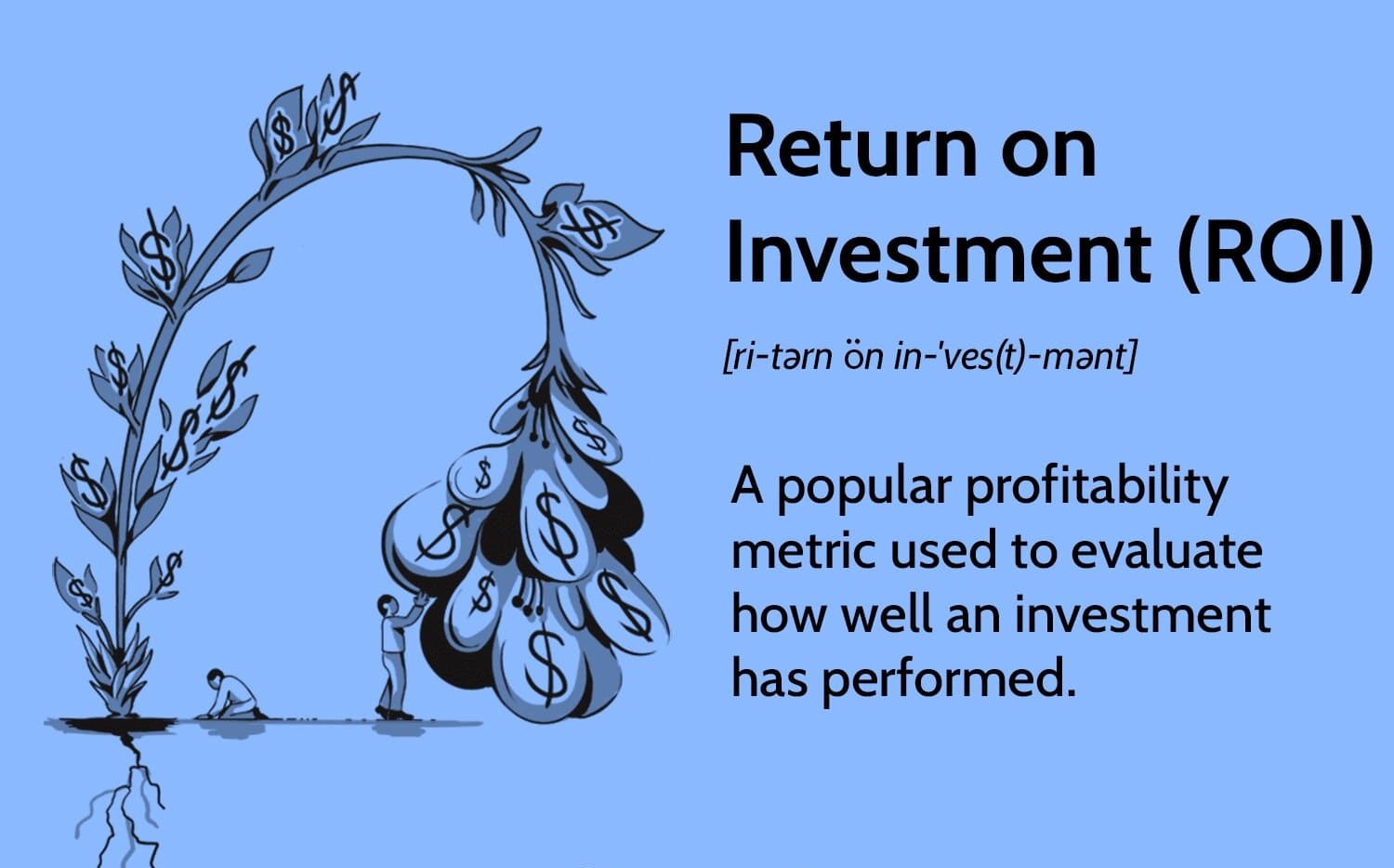Introduction
Welcome to the world of stock investments! If you’re looking for opportunities to grow your wealth and achieve financial goals, investing in stocks can be a viable option. Stocks offer the potential for attractive returns and the chance to be part of the dynamic world of businesses and the stock market.
But what exactly is a stock investment? In simple terms, when you invest in stocks, you’re buying a share of ownership in a company. By owning stocks, you become a shareholder and have a stake in the company’s future performance. As the company’s fortunes rise, the value of your investment can grow.
While stocks offer the potential for high returns, it’s important to understand that they also come with risks. The stock market can be volatile, and the value of your investments may fluctuate. This is why it’s crucial to have a good understanding of the market and how to make informed investment decisions.
One key principle of successful stock investing is diversification. This means spreading your investments across different assets, industries, and geographical locations. By diversifying, you reduce your exposure to risk and increase the potential for consistent returns.
In this article, we’ll explore the world of stock investments and provide you with insights and tips to help you make informed decisions. We’ll discuss various aspects of stock investing, including how to analyze stocks, factors to consider when choosing stocks, different types of stock investments, and how to buy and manage stocks effectively.
Remember, stock investing is a long-term game. While it’s possible to make short-term profits, the real benefits often come with a patient and disciplined approach over time. Whether you’re a beginner or an experienced investor, this article will empower you to navigate the world of stock investments with confidence.
So, let’s dive in and discover the exciting possibilities that lie ahead in the realm of stock investments!
What is a stock investment?
A stock investment refers to the purchase of shares in a company, making you a partial owner of that business. When you invest in stocks, you are essentially betting on the future success and profitability of the company. In return for your investment, you may receive dividends, which are a portion of the company’s profits distributed to shareholders.
Stock investments provide an opportunity for individuals to grow their wealth over time. As the company’s value and profitability increase, the value of your stocks can appreciate, allowing you to sell them at a higher price than what you initially paid. However, it’s important to note that stock prices can also decline, leading to potential losses if you sell at a lower price.
Stock investments can be an appealing option for several reasons. Firstly, they offer the potential for higher returns compared to other traditional investment vehicles such as bonds or savings accounts. While stocks come with more risk, they also have the potential for greater rewards.
Secondly, investing in stocks allows you to participate in the growth of businesses and industries that you believe in. For example, if you have a strong belief in electric vehicles and renewable energy, you can invest in companies operating in those sectors. By doing so, you become a part of their journey and can benefit from their success.
Furthermore, stock investments provide liquidity, meaning you can buy and sell stocks relatively easily. This flexibility allows you to adjust your investment portfolio as needed and take advantage of market conditions.
It’s important to remember that stock investing involves both risks and rewards. The stock market can be volatile, and prices can fluctuate based on various factors such as market sentiment, economic conditions, and company performance. Therefore, it’s essential to conduct thorough research and analysis before making any investment decisions.
In the next section, we’ll explore the significance of diversification in stock investments and how it can help manage risks effectively.
The importance of diversification
When it comes to investing in stocks, diversification is a crucial principle that can help manage risks and enhance the overall performance of your portfolio. Diversification involves spreading your investments across different asset classes, industries, and geographic regions. By doing so, you can mitigate the impact of the potential decline in a particular stock or sector.
One of the key benefits of diversification is that it reduces the concentration risk in your portfolio. Concentration risk refers to the vulnerability of having a significant portion of your investments in a single stock or sector. If that stock or sector experiences a decline, your entire portfolio could suffer significant losses. However, by diversifying, you can spread your risk and minimize the impact of any individual investment.
By investing in a range of assets and industries, you can take advantage of different market cycles and economic conditions. For example, while one industry may be experiencing a downturn, another industry could be thriving. This diversification allows you to offset any losses with potential gains in other areas of your portfolio.
Geographic diversification is also important as it reduces the impact of any regional economic or political instability. By investing in companies across different countries and regions, you can protect your portfolio from the risks associated with a specific economy or government policy.
Another benefit of diversification is that it can help stabilize the overall performance of your portfolio. Different asset classes, such as stocks, bonds, and real estate, tend to have different risk and return characteristics. By combining these asset classes, you can create a balanced portfolio that can smooth out short-term fluctuations and generate more stable returns over the long term.
It’s worth mentioning that diversification does not guarantee profits or protect against losses. It simply helps reduce the impact of market volatility on your overall investment portfolio. Proper diversification requires careful consideration of different factors, including the correlation between assets, industry trends, and your risk tolerance.
Now that we understand the importance of diversification, let’s explore some ways to analyze stocks before making investment decisions in the next section.
Ways to analyze stocks before investing
Before making any stock investment, it’s essential to conduct a thorough analysis of the company and its financial prospects. This analysis can help you make informed investment decisions and increase the likelihood of achieving favorable returns. Here are some key ways to analyze stocks:
- Fundamental Analysis: This approach involves evaluating a company’s financial statements, such as its balance sheet, income statement, and cash flow statement. By examining key financial ratios like earnings per share (EPS), price-to-earnings (P/E) ratio, and return on equity (ROE), you can assess the company’s profitability, financial health, and growth potential.
- Industry Analysis: Understanding the industry in which a company operates is crucial. Evaluate industry trends, competitive landscape, and growth prospects. Look for companies that have a competitive advantage or are well-positioned to capitalize on emerging trends.
- Management Analysis: Assess the quality and track record of the company’s management team. Look for experienced leaders who have a clear vision for the company and a proven ability to execute strategies successfully.
- Qualitative Analysis: Consider qualitative factors such as the company’s brand reputation, product differentiation, customer loyalty, and innovation. These intangible factors can have a significant impact on a company’s long-term prospects.
- Valuation Analysis: Determine whether a stock is overvalued or undervalued by comparing its current price to its intrinsic value. Various valuation methods, such as discounted cash flow (DCF) analysis, can help estimate a stock’s fair value.
- Technical Analysis: For those interested in short-term trading, technical analysis can be helpful. This approach involves analyzing historical price and volume patterns to identify trends and potential entry or exit points.
- Research and News: Stay updated with the latest news, market trends, and company announcements. Expert opinions, research reports, and industry publications can provide valuable insights and influence investment decisions.
Remember, analyzing stocks requires time, research, and a disciplined approach. It’s crucial to have a well-defined investment strategy and clearly defined criteria for selecting stocks. By combining different analytical approaches and thoroughly understanding the companies you invest in, you can increase your chances of making sound investment decisions.
Now that we’ve explored ways to analyze stocks, let’s discuss the factors to consider when choosing stocks in the next section.
Factors to consider when choosing stocks
When selecting stocks for investment, it’s important to consider various factors that can guide your decision-making process. These factors can help you identify companies with strong growth potential, sound financials, and a competitive advantage. Here are some key factors to consider when choosing stocks:
- Financial Health: Evaluate a company’s financial statements to assess its financial health. Look for consistent revenue and earnings growth, a strong balance sheet, and a sustainable competitive advantage.
- Industry Growth: Consider investing in industries that have high growth potential. Look for sectors that are experiencing favorable market trends, technological advancements, or changing consumer preferences.
- Competitive Advantage: Companies with a competitive advantage are more likely to generate sustainable profits in the long run. Look for factors such as unique products or services, a strong brand, cost leadership, or intellectual property.
- Management Quality: Assess the competence and integrity of the company’s management team. Look for leaders who have a proven track record, strategic vision, and a strong alignment of interests with shareholders.
- Market Position: Consider a company’s market share and its position within the industry. Look for companies that have a strong market presence and the potential to gain additional market share over time.
- Valuation: Evaluate whether a stock is overvalued or undervalued based on its price compared to its intrinsic value. Consider factors such as the price-to-earnings (P/E) ratio, price-to-sales (P/S) ratio, and price-to-book (P/B) ratio.
- Dividends: If you’re seeking regular income from your investments, consider stocks that pay dividends. Look for companies with a history of consistent dividend payments and sustainable dividend growth.
- Risk Tolerance: Assess your risk tolerance and invest accordingly. Some stocks may be more volatile than others, so consider your comfort level with fluctuations in stock prices and the potential for capital losses.
- Economic Factors: Take into account the broader economic conditions and how they may impact the company’s performance. Consider factors such as inflation, interest rates, and GDP growth.
- Diversification: Ensure that your stock selection is diversified across different industries and asset classes. This can help reduce the impact of any individual stock’s performance on your overall portfolio.
By considering these factors and conducting thorough research, you can identify stocks that align with your investment objectives and risk tolerance. Remember, investing in stocks involves both potential rewards and risks, so it’s crucial to make informed decisions and regularly monitor your investments.
In the next section, we’ll discuss the differences between long-term and short-term stock investments and which approach may be suitable for you.
Long-term vs. short-term stock investments
When it comes to stock investments, investors can adopt either a long-term or short-term approach based on their investment goals, risk tolerance, and time horizon. Understanding the differences between these two strategies can help you determine which approach aligns best with your financial objectives.
Long-term stock investments:
Long-term investing involves holding stocks for an extended period, typically several years or more. This approach focuses on the potential for capital appreciation and wealth accumulation over the long term. Investors who adopt a long-term strategy aim to benefit from the overall growth and success of the companies they invest in.
One key advantage of long-term investing is the ability to ride out market fluctuations and weather short-term volatility. By holding investments for an extended period, investors can potentially benefit from the compounding effects of returns and the power of time.
Long-term investors often prioritize fundamental analysis and the evaluation of a company’s financial health, growth prospects, and competitive advantage. They typically look for companies with strong fundamentals and a sustainable business model that can generate consistent returns over time.
Short-term stock investments:
Short-term investing, also known as trading, involves buying and selling stocks over shorter timeframes, often taking advantage of price fluctuations. Short-term investors focus on capitalizing on short-term price movements and market trends, aiming to generate profits quickly.
Short-term trading requires active monitoring of the market and technical analysis to identify potential trading opportunities. Traders often use strategies like day trading, swing trading, or momentum trading to take advantage of short-term price fluctuations.
While short-term trading can offer the potential for quick profits, it comes with increased risk and requires a greater level of skill and knowledge. Traders need to have a disciplined approach, strict risk management strategies, and a deep understanding of market dynamics.
Choosing the right approach:
The choice between long-term and short-term investing depends on your financial goals, risk tolerance, and time commitment. If you have long-term financial objectives, such as retirement planning or building wealth over time, a long-term approach may be suitable. However, if you have a higher risk appetite, time to actively manage your investments, and are looking for potentially quicker returns, short-term trading may be more appealing.
It’s worth mentioning that long-term and short-term approaches are not mutually exclusive. Some investors engage in a combination of both strategies, known as a hybrid approach. They may hold long-term positions while also taking advantage of short-term trading opportunities along the way.
Regardless of the approach you choose, it’s crucial to have a well-defined investment plan, conduct thorough research, and regularly review your portfolio to ensure it remains aligned with your financial goals.
In the next section, we’ll explore different types of stock investments to further expand your understanding of this dynamic market.
Different types of stock investments
When it comes to stock investments, there are various types of stocks that you can consider adding to your portfolio. Understanding the different types of stocks can help you diversify your investments and align them with your financial goals and risk tolerance. Here are some common types of stock investments:
- Blue-chip stocks: Blue-chip stocks belong to large, well-established companies that have a history of stable earnings, strong market presence, and a reputation for reliability. These companies are often leaders within their industries and are known for their resilience during economic downturns.
- Growth stocks: Growth stocks are shares of companies that are expected to grow at an above-average rate compared to other companies in the market. These stocks typically reinvest their earnings into expanding their business operations rather than paying dividends.
- Dividend stocks: Dividend stocks are shares of companies that regularly distribute a portion of their earnings to shareholders in the form of dividends. These stocks are popular among investors seeking regular income from their investments.
- Value stocks: Value stocks are shares of companies that are considered undervalued by the market. These stocks are often characterized by a low price-to-earnings (P/E) ratio or low price-to-book (P/B) ratio. Investors in value stocks aim to capitalize on the market’s underestimation of the company’s intrinsic value.
- Small-cap, mid-cap, and large-cap stocks: Stocks are classified based on their market capitalization, which is the total value of a company’s outstanding shares. Small-cap stocks have a smaller market capitalization, mid-cap stocks fall in the middle range, and large-cap stocks have the highest market capitalization. Each category offers different risk and return profiles.
- Cyclical and defensive stocks: Cyclical stocks are shares of companies whose performance is highly sensitive to the overall business cycle. These companies tend to perform well when the economy is growing but may experience declines during recessions. Defensive stocks, on the other hand, are shares of companies that are less affected by economic fluctuations and are considered more stable.
- Index funds and ETFs: Index funds and exchange-traded funds (ETFs) are investment vehicles that track specific market indexes. These funds provide diversification by holding a basket of stocks that represent the index they track, making them a convenient way to gain exposure to a broad range of stocks.
- International stocks: International stocks are shares of companies based outside your home country. Investing in international stocks can offer opportunities for geographical diversification and exposure to different economies and market trends.
It’s important to note that the performance of various types of stocks can vary based on market conditions and other factors. Diversifying your portfolio across different types of stocks can help mitigate idiosyncratic risks and potentially enhance overall returns.
Before investing in any type of stock, it’s crucial to conduct thorough research, analyze the company’s financials, assess its growth prospects, and consider your risk tolerance. By carefully selecting a mix of stocks that align with your investment goals, you can build a well-balanced portfolio.
In the next section, we’ll discuss the process of buying stocks and how to get started as an investor.
How to buy stocks
Buying stocks is a straightforward process that allows investors to become shareholders in the companies they believe in. Here are the basic steps to follow when buying stocks:
- Educate yourself: Before diving into the world of stock investing, take the time to educate yourself about the basics of the stock market, different investment strategies, and the companies you’re interested in. This will help you make informed decisions.
- Choose a brokerage account: To buy stocks, you’ll need a brokerage account. Research different brokerage firms and choose one that suits your needs, considering factors such as fees, customer service, and available resources.
- Open a brokerage account: Follow the instructions provided by the chosen brokerage firm to open your account. This typically involves providing personal information, verifying your identity, and making an initial deposit.
- Research and select stocks: Conduct thorough research on the companies you’re interested in. Evaluate their financials, growth prospects, industry positioning, and any other relevant factors. Consider using fundamental analysis, technical analysis, or a combination of both to aid your decision-making process.
- Place a stock order: Once you’ve selected the stocks you want to buy, log into your brokerage account and place the order. You’ll need to specify the number of shares you want to purchase and the type of order (market order or limit order).
- Monitor your investments: After purchasing stocks, it’s important to actively monitor your investments. Stay informed about company news, earnings reports, and any other factors that may impact the performance of your stocks. Regularly review your portfolio and make adjustments as needed.
- Consider a diversified portfolio: Building a diversified portfolio is essential to minimize risk. By spreading your investments across different stocks, sectors, and asset classes, you can reduce the impact of any individual stock’s performance on your overall portfolio.
- Stay disciplined: Stock investing requires discipline and a long-term perspective. Avoid making impulsive decisions based on short-term market fluctuations. Stick to your investment strategy and regularly assess your portfolio’s performance against your financial goals.
Remember, buying stocks involves risks, and markets can be volatile. It’s important to carefully evaluate your risk tolerance and ensure that your investment decisions align with your financial goals and time horizon.
If you’re new to stock investing, consider consulting with a financial advisor who can provide guidance tailored to your individual circumstances.
In the next section, we’ll discuss the importance of managing and monitoring your stock portfolio to ensure its continued growth.
Managing and monitoring your stock portfolio
Managing and monitoring your stock portfolio is essential to ensure its continued growth and align it with your investment goals. Here are some key aspects to consider when managing and monitoring your stock portfolio:
- Regular portfolio review: Set aside time at regular intervals to review your portfolio’s performance. Evaluate each stock’s performance, compare it to relevant benchmarks, and assess if any adjustments need to be made.
- Monitor company news: Stay updated with news related to the companies you’ve invested in. Monitor quarterly earnings reports, news releases, analyst updates, and any other relevant updates that could impact the company’s prospects. Use this information to gauge the ongoing health and potential future performance of your investments.
- Rebalance your portfolio: Over time, the performance of different stocks in your portfolio may cause imbalances in your desired asset allocation. Regularly rebalance your portfolio by selling some holdings and purchasing others to bring it back in line with your desired allocation and risk tolerance.
- Consider taxes: Be aware of the potential tax implications of buying and selling stocks. Consult with a tax advisor to understand how capital gains, dividends, and other investment-related income may impact your tax liability.
- Track your performance: Monitor and track your portfolio’s performance against your financial goals. Regularly assess if you’re on track to meet your objectives and make adjustments if necessary. Consider using portfolio tracking tools or spreadsheets to help you keep records and evaluate progress over time.
- Stay disciplined: Investing in stocks requires discipline and sticking to a well-defined strategy. Avoid emotional decision-making based on short-term market fluctuations. Instead, focus on the long-term outlook and the fundamentals of the companies you’ve invested in.
- Review and adjust investment strategy: Over time, your financial goals, risk tolerance, or market conditions may change. It’s important to periodically review your investment strategy and adjust it as needed to ensure it remains aligned with your objectives.
- Diversify your investments: Maintain a diversified portfolio by investing in different sectors, industries, and asset classes. This helps spread your risk and increase the potential for consistent returns. Regularly reassess your portfolio’s diversification and make adjustments if necessary.
- Consider professional advice: If you feel overwhelmed or lack the time and expertise to effectively manage your portfolio, consider seeking professional advice from a financial advisor. They can provide personalized guidance and help you make informed investment decisions.
Remember, managing and monitoring your stock portfolio requires time, effort, and ongoing education. Stay informed about market trends, economic conditions, and industry developments that could impact your investments.
By actively managing your stock portfolio, you can adapt to changing market conditions, reduce risk, and increase the potential for long-term growth.
In the next section, we’ll explore the risks and challenges associated with stock investments.
Risks and challenges of stock investments
Stock investments offer the potential for attractive returns, but they also come with inherent risks and challenges. Understanding these risks is essential to make informed investment decisions. Here are some common risks and challenges associated with stock investments:
- Market volatility: The stock market can experience significant volatility, with prices fluctuating based on various factors such as economic conditions, investor sentiment, and company-specific news. Market volatility can lead to sudden price declines, potentially resulting in temporary losses.
- Company-specific risks: Each company has its own set of risks that can impact its performance. These include factors such as management changes, competitive pressures, regulatory changes, and technological disruptions. Investing in individual stocks exposes you to the specific risks associated with those companies.
- Loss of capital: Stock investments carry the risk of losing a portion or all of your invested capital. Stock prices can decline for various reasons, including poor company performance, economic downturns, or unforeseen events. It’s essential to be prepared for potential capital losses.
- Liquidity risk: In certain situations, it may be challenging to quickly sell your stocks at the desired price. This liquidity risk can arise during periods of market stress or when dealing with thinly traded stocks. It’s important to consider the liquidity of the stocks you invest in, especially if you may need to sell them in the short term.
- Psychological challenges: The stock market can evoke powerful emotions, such as greed and fear, which can lead to irrational decision-making. It’s crucial to avoid making impulsive investment decisions based on short-term market fluctuations and instead maintain a long-term perspective.
- Inflation risk: Inflation erodes the purchasing power of money over time. While stocks have the potential to outpace inflation, there is no guarantee that they will do so. Inflation can reduce the real value of your investment returns, impacting your overall wealth accumulation.
- Systemic risk: Systemic risk refers to risks that affect the entire market, such as financial crises or global economic downturns. These events can impact the performance of individual stocks and lead to widespread market declines.
- Information and analysis risk: Making informed investment decisions requires access to accurate and reliable information. However, there is always a risk of incomplete or misleading information. Relying on inaccurate or biased information can lead to poor investment decisions.
- Timing risk: Timing the market, or trying to predict short-term price movements, is challenging and inherently risky. It’s difficult to consistently make accurate predictions, and mistiming your buys and sells can lead to missed opportunities or losses.
It’s important to acknowledge that investing in stocks involves both potential rewards and risks. To mitigate some of these risks, it’s advisable to diversify your portfolio, conduct thorough research, and have a long-term perspective.
Consider your risk tolerance and financial goals when making investment decisions. If needed, consult with a financial advisor who can help you navigate the challenges and develop a well-rounded investment strategy.
In the final section, we’ll summarize the key points discussed and emphasize the importance of continuous learning and adaptation in the world of stock investments.
Conclusion
Investing in stocks can be an exciting and potentially rewarding endeavor, but it comes with its share of risks and challenges. By understanding the fundamental concepts, analyzing stocks, and making informed decisions, you can navigate the stock market with confidence.
Throughout this article, we discussed the basics of stock investments, including what stocks are and the importance of diversification. We explored ways to analyze stocks before investing, considering factors such as financial health, industry trends, and management quality. Furthermore, we delved into the differences between long-term and short-term stock investments and examined various types of stocks to consider in your portfolio.
Additionally, we highlighted the steps to buy stocks, the significance of managing and monitoring your portfolio, and the risks and challenges you may encounter along the way. It’s crucial to stay disciplined, adapt your investment strategy when necessary, and stay informed about market dynamics.
Remember, investing in stocks requires continuous learning and adaptation. The stock market is dynamic, and market conditions can change rapidly. Stay informed, seek professional guidance if needed, and regularly review your investment plan to ensure it remains aligned with your financial goals.
Ultimately, stock investments can be a powerful tool to grow your wealth and achieve your financial aspirations. They offer the potential for attractive returns, the ability to participate in the growth of companies you believe in, and the opportunity to build a diversified portfolio. With knowledge, discipline, and a long-term perspective, you can navigate the stock market and work towards achieving your financial goals.

























